DIY SEO isn’t scary.
You’re a king / queen 👑 that has started your own new business. You’ve already launched your website. It looks great and the copy is compelling.
It’s time to go to market, and that means marketing.

Your sales guy, Dave, knows of a dynamite marketing agency that has proven results and an impressive client list. He thinks it’s a no-brainer to leave the marketing to the pros.

In accounting, Suraj sees it as an additional expense and suggests you take your marketing in-house.
So, what’s it going to be? Should you hire out search engine optimization services or go the DIY SEO route? Pros and cons. Hmm..
Stop thinking. There’s really no debate here.
Let’s be real with one another. After all, we’re going to be together for the next few minutes.
A good SEO agency can make a serious impact on your bottom line, but good SEO agencies cost real money. Money that you don’t want to spend.
You’re reading an article about budget DIY SEO. Your mind is already made up.
You’re not ready for an agency and, before you break out the cheque book, let’s consider what you can do for free.
DIY SEO can yield seriously juicy results. So why not bite off some ‘low hanging fruit’ before bringing in a sexy and talented agency like us?
Heck, we’ll even get you started!
[lwptoc hierarchical=”1″ hideItems=”0″]Getting started: SEO Basics
You’re an SEO virgin. Big deal.
It might be intimidating at first but once you practice a few times, it gets, well, more complicated.
We’re not helping, are we?
Okay, just close your eyes, take a deep breath and relax. There are a couple of things we want to show you. You’ll need access to these basic tools and info before diving into your SEO.
Valid Search Console integration
You might remember the Google Webmaster tool? Search Console is the same thing, it’s just a different name.
It’s first on our list because it’s fundamental to understanding how users engage on your website.
Don’t have a clue what we mean?
Google Webmaster… er sorry, Search Console shows you how much the search engines love (or hate) your content and recommend how you can improve.
You can log into a dashboard and get all the nitty-gritty details in one place: how your site is doing and which pages are killing it -or killing you.
Ready to log in?
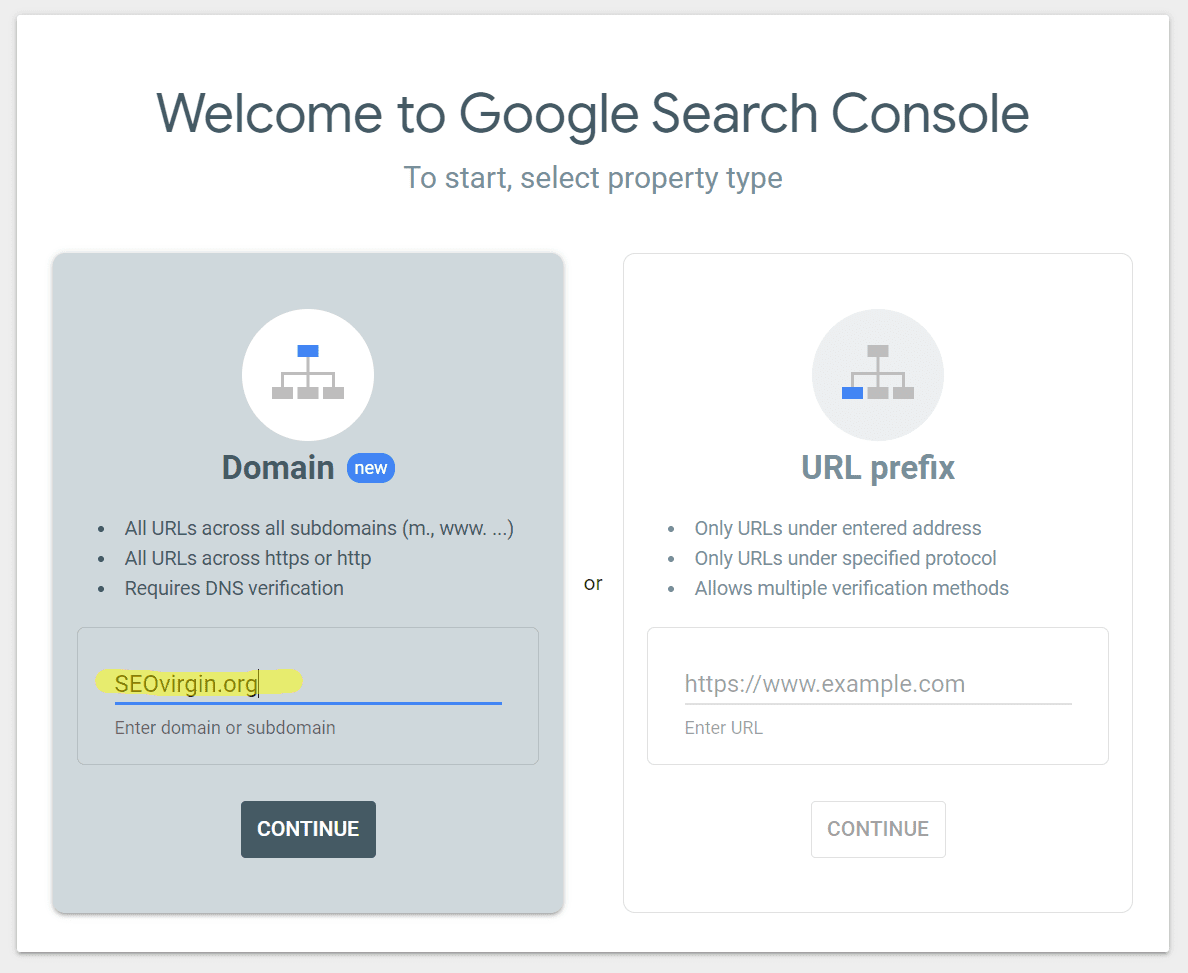
Sign into Search Console and see if your site is listed in your account. If it is, great! If not, time to verify ownership. There are two ways to go about it:
- Domain: Copy a txt record into the domain’s DNS configuration.
- URL: Upload an HTML file into your webspace.
Once your site is verified, click a button to import the site data and you’re golden.
Now you’ll see stats that are worth a fist bump and others that make you want to hit something.
Note: You might not really understand what you’re looking at just yet, but that’s okay! It’s good enough that you’re now tracking it. More on this as you master the basics.
Website access
Can you log into your website?
If not, contact your hosting company. If they say they can’t help, threaten to take your business elsewhere. That usually works 😆
If you can, great! Keep reading.
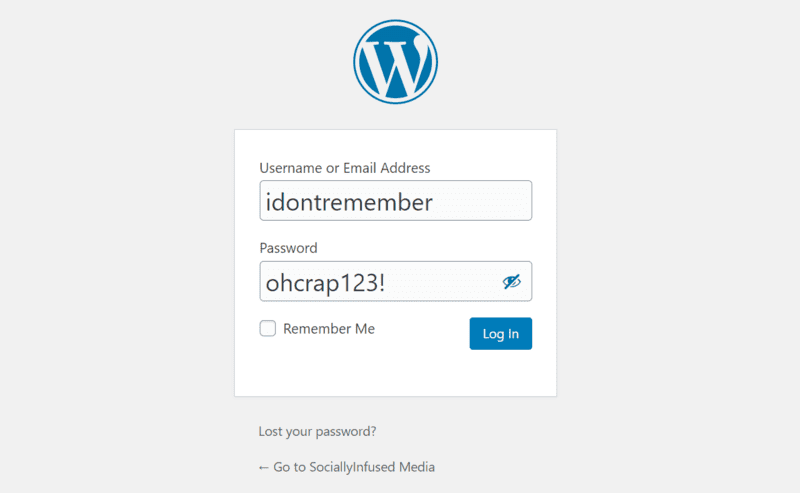
Get SEO Plugins
Plugins give us that extra oomph. Think of them as little blue pills for websites that have, well umm, ‘performance’ issues.
If you use WordPress, these SEO plugins can give you a major boost.
Why? If they were beverages, you’d be looking at Google’s favourite cocktail.
- Yoast SEO: Get your pages Google-ready by running a readability check and seeing how well you’ve optimized for keywords.
- Rank Math: Manage on-page SEO for your posts and pages. You can also control noindex/nofollow/noarchive meta tags- more on that fun stuff later.
- Broken Link Checker: Sifts through your entire site to highlight broken links.
- Rel NoFollow Checkbox: Prevents Google from using your affiliate links against you by interpreting them as spam.
- All in One Schema Rich Snippets: Ensure that your search engine results contain all the important elements, like descriptions, photos, and star ratings for products.
Start mixing!
Create a Sitemap
Navigationally challenged? Us too.
Store directories at the shopping mall are the sh*t.
Sitemaps do the same job. Only instead of shoppers, they let the search engine bots know where everything is on your site.
A sitemap is a file with a list of all the URLs on your website. Once the bots find it, they crawl everything a lot more efficiently.
Most sitemaps are formatted using XML, but don’t let that be a deal-breaker. There are a lot of user-friendly sitemap generators that will do all the work for you.
Give one of these a shot:
Create a Robots.txt File
The robots.txt file is like your very own mall cop.
It lets the bots know which pages they can and cannot crawl and index. Used right, they can improve your SEO big time.
You can use it to:
- Keep the legitimate bots out of pages that are still under construction. We say ‘legitimate’ because spyware, email harvesters, and other crap tend to follow their own rules.
- Help your key pages stand out. You want the bots to crawl your content pages, not useless stuff, like a shopping cart checkout page.
You can usually find your site’s robots.txt file at https://www.yoursite.com/robots.txt.
Don’t have one? There are lots of WordPress plugins that let you generate and manage a robots.txt file.
Don’t use WordPress?
You may need to contact a geeky version of Paul Blart and persuade him to make you a robots.txt file.
If you’re super-nice, he might also let you take a ride on his scooter.
Check for Manual Actions in the Search Console
Did you fire your last webmaster? I’m sure you had a good reason.
You probably have nothing to worry about but you might want to check your Google Search Console for any manual hanky-panky.
It’s better to be safe than sorry.
Manual actions are usually triggered by blatant attempts to violate Google’s webmaster guidelines. If your webmaster was a real dummy, they might have:
- Plagiarized content pages
- Signed your site up for a link farm
- Used hidden text to get some extra SEO mileage
If you find something, undo the damage. If you can’t, send an SOS to an uber-helpful social media marketing agency!
Whitehat SEO ethics
A quick word before we get into the fun stuff.
We wear white hats at SociallyInfused. This means that we rank without breaking Google’s policies or SEO guidelines.
Blackhat techniques often refer to those ‘too good to be true’ or ‘quick results’ techniques.
At one time, buying links (blackhat technique) and cloaking (another blackhat technique) made you look edgy and kind of cool. No more.
Now it makes you look desperate. And that’s not you, right?
Google will reward you for being good. Be good. Okay, back to the party.
Keyword Research
Think Bitcoin is valuable? Well, it is.
But keywords are priceless. So is knowing how to perform the research.
First, you need to learn the difference between long-tail and short-tail keywords.
Say what!?
You’re a newbie, so trust us when we say that longer is better 🍆
Long-tail keywords add clarity.
For example, is your product ‘organic milk chocolate’ or ‘homemade dark vegan chocolate’?
Google wants to know and it will thank you for a clear answer. (So will all those dark chocolate-obsessed vegans out there.)
Pro tip: If you really want to be on Page One for ‘dark chocolate,’ stick with an SEO agency that knows Google like you know chocolate. After all, that’s a very competitive short-tail keyword.
Is chocolate really better than sex? Now that you’re thinking looooong, let’s get into intent.

Did they have to say ‘many’ twice?
Intent keywords
Intent keywords capture the reason for the search (also known as search intent).
Is the user looking for a certain brand? Do they want to buy? What’s their price point?
Read their minds and then pick keywords that are practically CTAs. For example:
- Furniture free shipping
- Buy donuts online
- Toronto coffee coupons
- Discount designer purses
Got your keyword list ready? Great! Now pick the ones that are going to get you the best results.
You’ll want to look at:
- Which ones get a lot of searches
- How competitive they are
The sweet spot is identifying those high-value but low-competition keywords that boost your SEO without killing your budget.
Keyword tools
There are A LOT of tools to help you out. Here are some of our faves:
These beauties will show you:
- What keywords work for your business
- Which ones are the most popular
- If ranking for them is realistic
The rest is up to you!
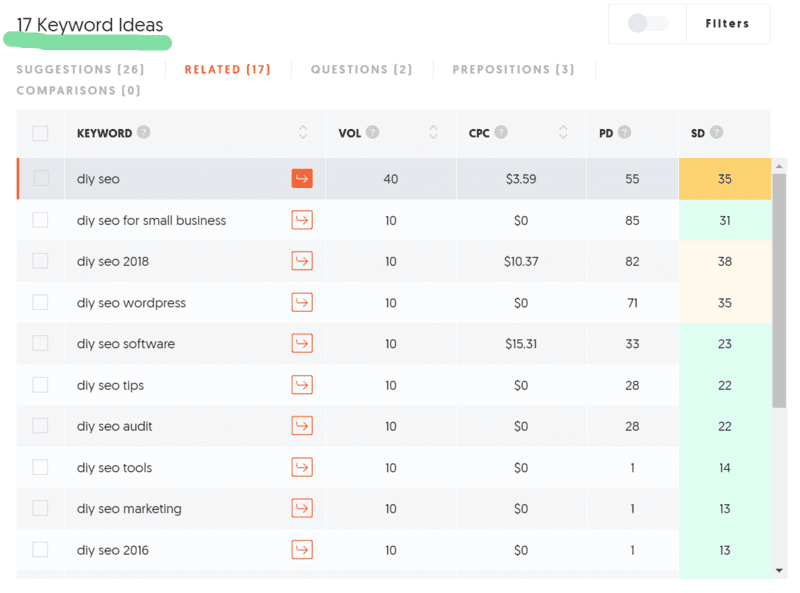
The Ubersuggest tool can help us find ‘value keywords’ as well as additional and relevant alternatives.
Create a Keyword Map
Got all your keywords picked? Great! Time to map them.
Keyword mapping is when you assign relevant keywords to the pages on your site. Without it, your search visibility will be like a crap shoot. You might get lucky and end up on Page One, but you probably won’t.
Tip: some sales and marketing platforms like HubSpot have built-in keyword and content strategy tools that identify things like relevancy, search volume, and ranking difficulty.
You can also use a good old-fashioned Excel sheet to contain and map all your researched keywords.
The point is to have a central location for everything so that you can follow up and make changes if necessary.
Find Out What People Are Asking
Delivering value is all about giving people what they want, when they want it.
But how do you figure out what they want?
That’s not just a riddle. It’s a thought-process that will take you super-far.
When you structure your content so that it answers common questions related to your chosen keywords, it can really pay off. For example:
- You’ll show up in prime areas like Featured Snippets and People Also Ask in Google’s search results.
- By meeting user intent more successfully, you’ll improve your organic rankings and conversion rates.
- Search engines will see you as an expert on the topic. Who makes a point of answering questions except for experts?
So how do you find out what everyone is asking?
- People Also Ask: This widget appears in Google Search Results, showing you questions related to your original query.
- Related Searches: Google has a ‘searches related to’ section at the bottom of its results pages. For example, if you search ‘Hamilton makeup stores,’ you’ll see a whole whack of related search terms that would make awesome questions.
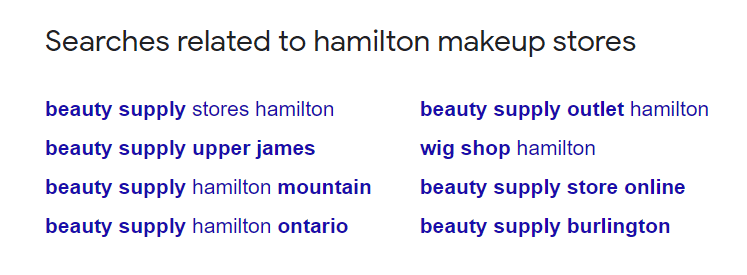
- AlsoAsked: This free tool pulls questions directly from Google search results.
- Answer the Public: Once you get past the smiling dude on the landing page, you’ll find that this inexpensive tool does a great job of identifying question keywords.
- Keywordtool.io: If you’re looking for a quick and affordable question tool, this is it. Input your query and hit the ‘Questions’ button.
In addition, popular SEO tools like Ahrefs, Moz, and SEMrush now let you zero in on questions when using their keyword research platforms. All you need to do is filter your research using a ‘Questions’ button and boom! You’ll know what people WANT to know.
Technical SEO
HTTPS is Not Optional!
You’ve probably seen that some URLs have HTTP. Others have HTTPS.
One’s better for SEO than the other. Can you guess which?
Yes, it’s HTTPS.
That ‘S’ means that a website is secure. In other words:
- Visitors don’t have to worry about their information being stolen
- Files are protected from corruption during transfer
- By requiring authentication, hacks and attacks are deterred
The whole technology is like a personal bodyguard for the website. Pretty cool, huh?
Google sure thinks so!
So what does SSL Encryption mean for SEO?
- HTTPS sites own page one. Run a search and see for yourself.
- You’ll benefit from more traffic because people trust secure connections.
In fact, Google recently announced that its Chrome browser would soon be blocking downloads from non-secure sites. We’re glad we beefed up our security long before this!
Once you’re done, keep your eyes open for internal links that still point to the old HTTP page addresses and update them before the Google bots expose you!
Fix Crawl Errors
When the bots have a problem crawling your site, they complain to mama Google.
To find out if you’ve peeved them off, log into Google Search Console and check out the coverage report. You’ll quickly find out if:
- The bots couldn’t find your robots.txt file
- You’ve got broken links resulting in 404 errors
- Flash, Javascript, or redirects on the site are causing crawl issues
Yes, you’ve been ratted out. But it’s for your own good. Really!
How Fast is Your Site?
With some things in life, you definitely want to take it slow.
Not with your website, however.
We’re going to be blunt here. Users hate slow sites.
So does Google.
In fact, it has confirmed that in 2021, user experience is going to be an even bigger ranking factor than it is now.
It’s hardly a surprise, really. Slow-loading pages are already being flagged during site audits, so Google is cracking down. Do yourself a favour and run your URL through Google’s PageSpeed Insights tool now.
Add Structured Data
Are you using structured data?
If you’re Googling that term right now, we’re going to guess that the answer is no.
We’ll be honest- it is a little tricky. You essentially turn your content into code that lets the search engines improve the display in the search results. See below!

See those stars and review count? Pure Schema magic! No, actually it’s a great example of a review rich snippet generated by a schema.
You can easily put a piece of code on your website. At Schema.org, you can find formats for people, places, businesses, and much more! Go check it out or give your developer a friendly nudge!
How Deep are Your Pages?
No one should have to click more than three times to access any of your priority pages. Any more, and you’re waaay too deep!
Master the Redirect
Redirecting can ensure that visitors don’t get a broken link, but it can get a little messy if you don’t use it properly, so here’s a crash course:
- Use a 302 redirect if the change is only temporary. For example, you’re only redesigning the page, not taking it offline permanently.
- Use a 301 if the page is gone for good.
While Google has confirmed that 302 redirects don’t hurt PageRank, you’re expected to update it to a 301 if the change is permanent.
Bonus tip: Redirects should be simple- you send visitors from page A to page B. If you catch them on a redirect chain, they won’t be happy. Google probably won’t be either.
Fix Title Tag Mistakes
Title tags are HTML elements (codie coding stuff) that tell the user what your page is about. They are placed in your page header and look something like: <title>Title of Your Page</title>.
Good title tags are fundamental SEO, so any issues with them are a really big deal.
Therefore, you want to avoid the following:
- Pages without title tags
- Duplicate title tags
- Truncated title tags, which are cut off on the SERPs (see below)
The good news is that title tag issues will be flagged in your site audit report, making them easy to find and fix.
Meta Descriptions
Okay, we’ll be honest. Meta descriptions haven’t been a direct ranking factor for years.
BUT…
Your page’s meta description shows beneath the title tag on the SERPS, revealing what the page is all about. You want them to be good, so that visitors can’t help but click on the link, which can positively affect your organic click-through rate.
You also want them on all pages: a page title without a description just looks weird, doesn’t it? Especially when Google makes up for the blank space by inserting navigation text and other sh*t that doesn’t belong there.
Header Tags
Header tags tell the bots what your page content is all about. They’re super-important, and out of all of them, H1 is king.
The H1 tag is the page’s main heading, so each page should only have one. You’ll want to make sure that it includes the page’s main keyword too. (Actually, all header tags should be indicative of page content, but H1 needs that extra love and attention!)
Get Rid of Deadweight
If any content on your site isn’t adding value, get rid of it.
Run a site audit, identify those pages that don’t add value or rank, and update them or toss them out entirely. Decluttering a site can give it the added boost you’ve been looking for.
Ensure Images Have ALT Tags
ALT tags are an SEO tool that is often neglected.
Probably because you can’t see it until you hover over it, but the bots can. They use these tags when evaluating site content, so don’t miss out on this great opportunity!
Avoid Keyword Cannibalization
Keyword cannibalization happens when a single website (maybe yours) targets the same keyword (and with the same intent) across multiple pages. This is a problem for a couple of reasons:
- A cool new page on your site could end up ranking below one that’s optimized for the same keyword but is seriously out of date.
- Both pages could suffer a drop in rankings if inbound links are split between them.
Give your pages their unique focus and they won’t eat each other. Promise!
Give Orphaned Pages a Home
All pages on your website should link to (or be linked to) from at least one other page. Otherwise, they’re easily missed and your site might not be ranking as well as it could be. So check your site audit report for any pages flagged as orphans and link them up!
What are the two types of SEO?
That’s easy. On-page and off-page SEO.
- Think of On-page SEO as working, well, on your page. Working to make each page on your website more appealing to search engines and visitors is super important.
- Off-page SEO is promoting yourself online. Forget what your mother told you about bragging, in the SEO world, being loud and proud gets you rewarded.
All of your SEO-related tasks should fall into one of two these buckets.
What are the best DIY on-page SEO techniques?
Keyword research done? ✅
Access to Search Console and your site files accomplished? ✅
Now it’s time for some on-page SEO. Here’s where you make your site a search engine magnet!
While some strategies should be left to the pros, there are others that you can do yourself. Let’s take a look at the easy ones that get results.
Keywords in content
Use your keywords in content, but don’t overdo it. Nothing turns people off more than obvious keyword spam.
Treat SEO like a dating game: desperation just looks bad.
Use a single keyword in your title, one or two in the meta description, and sprinkle them lightly across your content.
Aim for a 1 to 2% ratio: for example, a 1000-word post should only have 10 to 20 instances of the keyword on the page. Any more and you might as well add ‘Newbie’ for good measure.

Keyword stuffing is easily identified by unnatural high keyword density in content. It’s considered a blackhat SEO technique and is against Google’s quality guidelines—and keyword stuffing can result in removal from SERPs.
Improve your click-through rate
Click-through rate (CTR) is the number of clicks on your link compared to how often people see it. Why does it matter?
If you’re not getting much response each time you appear, Google will dump you for someone more exciting, loser 💔
Now you know that Google uses CTR as a ranking factor. So how do you improve yours?
Think of Search Console as that brutally honest friend.
It will show you which of your pages are getting the cold shoulder. Then it’s up to you to give them a makeover.
Cupid’s hint: power words like ‘best’, ‘discount,’ and ‘delivery’ work wonders. It’s like stuffing your pants for Google.

Do some internal linking
Think of internal linking as a “yo, what’s up?” When the most popular pages on your site link to those that aren’t as visible, it’s like being invited to join the ‘in crowd.’
Those less popular pages get a boost because now everyone knows- and cares- who they are.
Here’s how you do it:
- Use keywords in your link text. Instead of something lazy like ‘click here,’ go for ‘most popular children’s sweaters’ or ‘free coffee delivery.’ Google loves it!
- Don’t use a bunch of internal links with the same anchor text. Cough *lazy* cough.
- Put your links high up on your pages instead of at the bottom. Think billboard vs. sandwich board.
Optimize your content
You have to write both for search engines and users. Good luck.
It’s not as hard as it sounds but it does take some practice. The golden rule is to act natural, dude; just describe your products and services.
Make it clear how great they are without overdoing it on the adjectives. Don’t look nervous!
Also, big words don’t impress Google. With SEO, the simpler the better.
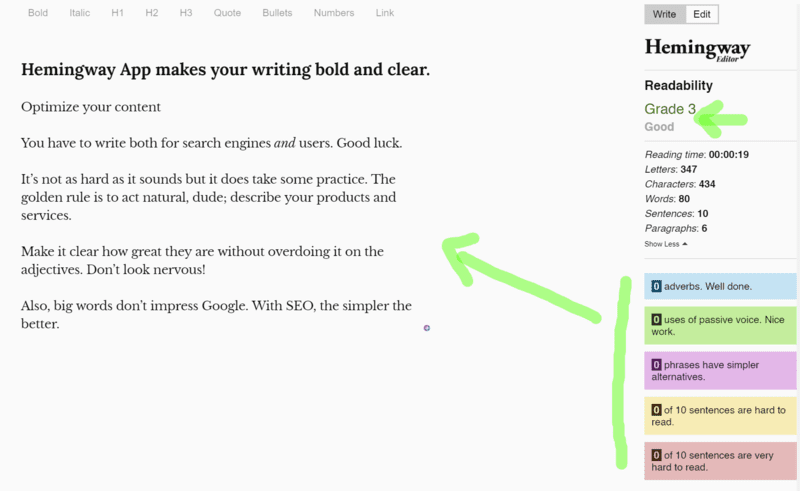
Use the Hemmingway Editing tool if you’re looking to write clear and concise copy for your audience.
Optimize your images
Yes, images need to be optimized too!
Give each image a real name, not a number. ‘69696969.jpg’ doesn’t tell Google anything (well it might if you use those numbers), but ‘organic-gala-apples.jpg’ does.

While you’re at it, stick with the jpeg format and keep file sizes as small as possible. JPEG optimizer and CompressNow are great tools for reducing your image sizes without tossing image resolution out the window!
How not to mess up your on-page SEO
Some business owners are so eager for results that they’ll pull on-page tricks to try and fool Google.
Repeat after us. Google is too smart for you.
Which is why you should never do any of the following Black Hat tricks below.
Keyword stuffing
If your text reads like you ran it through a word spinner, you’ll lose trust. Sentences like “Looking for the best shoes in Hamilton? We sell Hamilton’s best shoes!” make you look like a (desperate) amateur.
Doorway pages
What is this, 2010?
Back then, doorway pages were useless to readers but they were a fast way for low-quality pages to rank well for certain pages. Marketers used them to funnel visitors onto pages that would actually convert.
News flash- this trick doesn’t work anymore. Try it and you’ll be lucky if your site gets indexed at all.
Duplicate content
Lazy site owners wailed on the way that Google started penalizing for duplicate content.

Grammarly is a great tool to ensure your content is 100% unique.
Feeling that creating unique content took too much time, they used to scrape other websites, meaning that they copied content and claimed it as theirs. Can’t do it anymore, sorry!
Cloaking
Cloaking is another Black Hat trick whose day is done. It happens when you have one page for site visitors and another just for Google.
Your site content should be designed for your visitors, not Google bots. The way to achieve good rankings is to create content that users will want to visit again and again. Trust us, the bots will come with them.
DIY off page SEO tips
What you do off-page matters too. Getting quality citations and backlinks is an awesome way to get some serious Google love.
Citations
Citations list your business details like name, address, and phone number. The really good ones let you add images and a link to your website. Popular (and free!) options include:
- Google My Business
- Yelp
- Yellow Pages
A listing in a credible directory can boost your rankings because they’re a vote of confidence from sites trusted by Google. It’s like that whole street cred thing- yeah, it works with search engines too. Bro.
Backlinks
Like citations, you can get free backlinks if you’re willing to do some legwork.
There are two main types of backlinks: DoFollow and NoFollow.
- DoFollow links in SEO help you boost your website ranking.
- NoFollow links don’t directly improve site ranking but they do generate traffic and engagement. Think social media links.
Here are some platforms you can use to create DoFollow backlinks, along with their respective domain authorities (DAs):
- Bloglovin – DA 90
- UpCity – DA 82
- Websites.ca (canadian only) – DA 81
- Fstoppers – DA 79
- Viesearch – DA 71
Examples of some citation sites for NoFollow backlinks:
- Yelp – DA 94
- Foursquare – DA 94
- Angel.co – DA 90
- Crunchbase – DA 90
- Yellowbook – DA 77
Ready to start?
Contribute quotes
Platforms like SourceBottle or HARO (Help a Reporter Out) will give you a link if you’re willing to help out a reporter or news agency.
Submit guest posts
Offer to write a guest post for sites your customers care about. You can use the following search operators on Google to find the best options.
“[your keyword]” +”write for us”
“[your keyword]” +”write for me”
“[your keyword]” +”become a contributor”
“[your keyword]” + “guest post”
“[your keyword]” +”blogging guidelines”
“[your keyword]” + “guest post guidelines”
“[your keyword]” +”contribute”

Ask for a backlink
Do you sell the best organic groceries in town? Reach out to other sites where your health-conscious customers frequent, like yoga studios and vegan bakeries, and let them know that you rock. Link juice for everyone!
Publish trending content
Get people talking by creating content they will want to share. As the saying goes, if they’re talking about you, they aren’t talking about anyone else, and that’s kinda the point. How-to guides and breaking news work like a charm.

Ahrefs has a great Content Explorer tool to help identify ‘hot’ content within a specific niche or topic. In the above example, we searched ‘SEO Guide’.
Leave comments
Comments section is one of the oldest techniques but is still a decent source to get high-quality backlinks. Your options include:
- Simple comment backlinks: You get a backlink linked to your name. This option is enabled on most websites.
- Commentluv enabled backlinks: Bloggers use the Commentluv plugin to encourage comments. It’s a win-win situation for them and you.
- Anchor text comment backlinks: Several websites allow HTML tags in their comment sections.
Start a YouTube channel
With over 30 million active users daily, YouTube is where you want to get a backlink.
By starting your own channel, you give your brand the ultimate exposure and the search bots will be all over your links like flies on, well, you know. Just make sure the videos don’t look like an after-school project or you’ll look like a hobby instead of a business.
Note: video content is HOT and Google loves it.
Check out the competition
This is the oldest trick in the book- it even predates the Internet. Seriously!
It’s called ‘know thy competitor.’ These free backlink checker tools will show you who’s linking to your competition (and therefore wouldn’t mind linking to you).
- Free Backlink Checker: Using this tool, you can go through another site’s backlink profile to discover patterns as well as opportunities. You can search for backlinks to an individual page or the entire site.
- Monitor Backlinks: With monitor backlinks, you can check the top 300 backlinks of any domain. These links are sorted by their quality as determined by Citation Flow and Trust Flow, two primary SEO metrics that analyze trustworthiness.
- Sitechecker: Just enter the domain name that you want to check for current links. Doesn’t get any easier than that!
- Ahrefs: For many marketers, Ahrefs is the Holy Grail of backlink checking. Check your competitors’ backlinks, compare them with yours, and see where you can improve.
- SEMRUSH: With this tool, you can track multiple competitors’ websites and get all the deets on their backlinks.
- Majestic SEO: You’ll get great insights from Majestic SEO but the free version only yields 10 backlinks. Any more and you’ll need their premium subscription.
- Open Site Explorer: This backlink checker tool by Moz lets you identify backlinks and collect important information like the newest links, spam score, page authority, domain authority, and more.

The organic results of a comptetitive analysis on the SEMrush tool is an insightful initial look at where you stand in relation to your competition and how you’re percieved relative to them.
Improve your social media engagement
Although it’s still not completely clear how much social signals help ranking, we advise that you don’t neglect social media when building your off-page SEO strategy.
Think of it this way. Social media is popular and it’s not going away, right?
So then why would Google and other search engines overlook them? We are now even seeing tweets being displayed in search results.
Set up business social media accounts and start using them. Regularly. Get conversations started about your products, services, company news, and the name of your new mascot. If your followers pass you around to their friends, even better. Give ‘em something to talk about and keep the conversation going!
Create some social media goals
Remember when you set goals for your business? Now set some for your social media plan.
Here are some good examples:
- In the next three months, you will do one Facebook, Twitter, and Instagram post per week.
- In the next six months, social media traffic to your business site will go up by 15%;
- In the next 12 months, you’ll double your Instagram followers
Goals keep you motivated and on track. Without them, your social media activity will be like a ship without a sail: you could reach land, or you could sink and never be heard from again.
What content will you share?
You’ve got lots of choices here and there are no wrong answers. Your options include:
- Blog posts and articles you’ve written
- Blog posts and articles that others have written (and you wish you did)
- Product or service information
- Your brand story
Whatever you go with, keep it engaging. When you deliver content that your audience loves and wants to share, their friends may soon be your customers.
Set up content buckets
You know what type of content your customers will find sexy. Now set up your content buckets. You can also call them content categories, but it doesn’t sound as cool.
If you sell online games, your content buckets might look like this:
- Single player games
- Multiplayer games
- Holiday games
- Newly released games
Once you identify content buckets for your social media presence, every post you make should relate to at least one of them. Be consistent and be cool!
How much content is too much?
Have we got you hyped up? Are you ready to shoot posts everywhere like, um, bullets?
Or have we got you all stressed out and wanting to hide from what looks like a lot of work?
Don’t do either. While your social media strategies should not be an afterthought, it shouldn’t take time from the business either.
You can save a lot of time by planning your posts in advance and using a scheduler like Hootsuite to automatically post them for you when your audience is most active. (Check your analytics for each platform to see when that is.)
This way, you won’t have to do manual posts unless something REALLY amazing happens.
Here’s how to not mess up your off-page SEO
If you make any of these mistakes, welcome back to Square One (and we’re not talking about the mall).
Avoid link spam
Seriously. It’s not 2005. Stay away from the following:
- Links with a high spam score
- Links with low domain authority
- Unnatural anchor text
- Backlinks from irrelevant sites
- Links with low trust flow
Don’t buy links
Think of Google as being like Santa. It knows when you’re naughty or nice.
Build your links naturally. It’s expensive to buy backlinks and it’s also naughty 🎄
Use variety in your anchor text
If your anchor text is limited to the same word or phrase, it’s going to look spammy. By now, you know that will happen next.
Instead of flooding your content with a ‘Best SEO’ link, try ‘Best Off-Page SEO Practices.’ Like we’ll be doing!
Now You’ve Mastered DIY SEO!
Once you’ve mastered basic SEO, you’ll see gains. But don’t let the journey stop there. Keeping following that yellow brick road!
P.S. search engine optimization can be overwhelming at first, but we’ve all been there. We follow David Sayce religiously on LinkedIn because he simplifies SEO. He’s also wholesome and encouraging. So, we’ll leave you with some wise words from this SEO pro.






